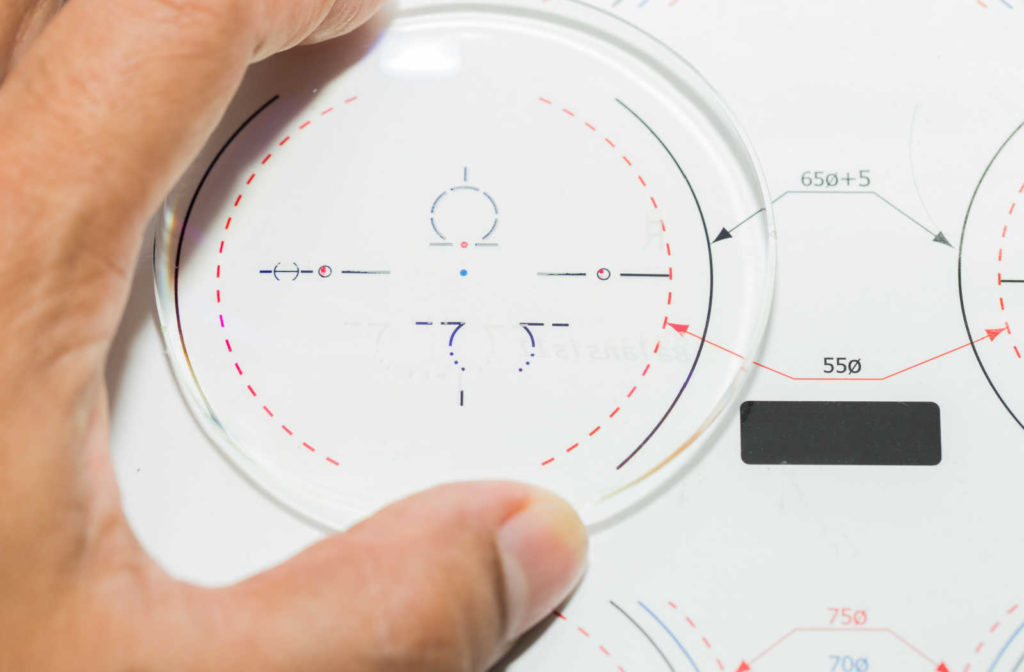As your eyes change, you may find more clarity with multifocal lenses that allow you to have multiple prescription strengths over the surface of one lens. Multifocal lenses can help you see clearly at a distance and read up close with the same pair of glasses.
Traditional bifocals have a visible line that divides the two prescriptions, but progressive lenses offer a gradual transition across the lens. Various progressive lenses are available to suit your lifestyle and vision needs, so one pair of lenses can help you see everything.
What are Progressive Lenses?
Unlike bifocal or trifocal lenses, progressive lenses are a type of multifocal lens that allows you to see clearly at several distances without a bifocal line.
As your eyes age, focusing on nearby objects becomes difficult. This presbyopia sometimes makes people switch between single-vision eyeglasses and reading glasses throughout the day.
Progressive lenses combine all the corrective power you need into one set of lenses. With progressives, you look through the top of the lens to see things at a distance. The middle of the lens sharpens vision in the middle ground. Meanwhile, the bottom portion helps you see up close.
What are the Different Types of Progressive Lenses?
There are several different types of progressive lenses for you to consider.
Standard Progressive Lenses
Standard progressive lenses are a universal type and will work for most people. It’s the most basic option for someone interested in trying progressive lenses.
If you’re planning on shopping for standard progressive lenses, try to shop for new frames of an appropriate size. Frames with progressive lenses need vertical height to allow for the smooth transition of strengths. If your existing frames are too short, you’ll lose out during manufacturing.
Short Corridor Progressive Lenses
If you have a narrow face and prefer smaller frames, you don’t have to miss out on progressive lens technology. Short corridor progressive lenses are designed for smaller frames. It takes a skilled hand to fit all the “corridors” into a small frame, but you can still have the three strength levels.
It may be challenging to adapt to these progressives initially, and the “corridor” for reading won’t be very wide. It will take some effort to remember to keep your eyes centred to maximize the space.

Computer Progressive Lenses
Computer progressive lenses are meant for short distances, like a computer’s length away. If you work at a computer for more than four hours a day, these progressive lenses are ideal for helping reduce fatigue and eye strain.
Not just for office dwellers, artists, hairdressers, librarians, mechanics, or anyone working at intermediate distances can benefit from these progressives. Unfortunately, these lenses don’t work well on distances, so you’ll likely need to swap these frames out when it’s time to drive home.
Premium Progressive Lenses
Premium progressive lenses are custom designed to fit the eyeglass frame and eye anatomy, making them easier to adapt to and feel more natural. These lenses offer a more distortion-free reading area so vision can be clearer.
All the ranges of strengths in premium progressive lenses fit the frame seamlessly. However, premium progressive lenses can only be purchased through a provider with the technology to take the digital measurements needed to make these lenses.
Ground-View Progressive Lenses
Ground-view progressives offer an additional area at the bottom and sides of the lens to provide better vision when looking at the ground, driving, or typing on the computer. These lenses are ideal for those who enjoy the outdoors because they’re designed to reduce distortion and feel natural.
These lenses are only available from a few manufacturers as they’re not the most adaptive type.
Transitions Progressive Lenses
Transition lenses have been available on single-vision glasses for years. Transitions is a brand of photochromatic lens that darken on their own in ultraviolet light. They act as shade to the light outdoors, and when you walk back inside, they change back to clear again.
This is one way to have a single pair of glasses for indoors and outdoors without having a second pair of prescription sunglasses.
Explore the Newest Eyeglasses Technology at Eye Care Group
Whether you’re shopping for progressives or want an update from your last set of lenses, the team at Eye Care Group can help you find the best lenses for your vision needs.Book an appointment for an eye exam to get an updated prescription and discuss your vision changes with our optometrists. Then, let our team help you choose from modern frames to craft your new go-to pair of glasses.




